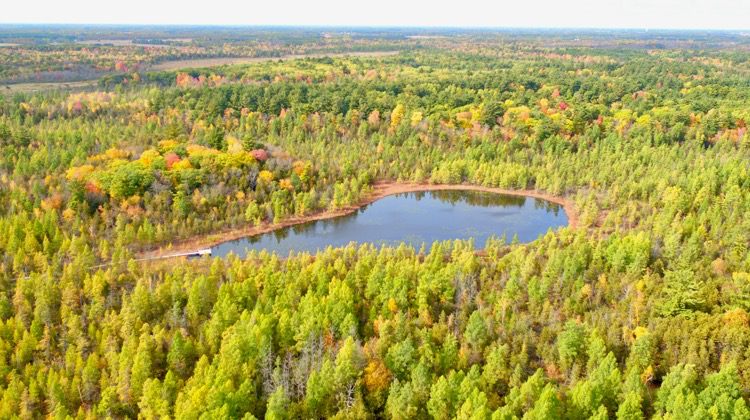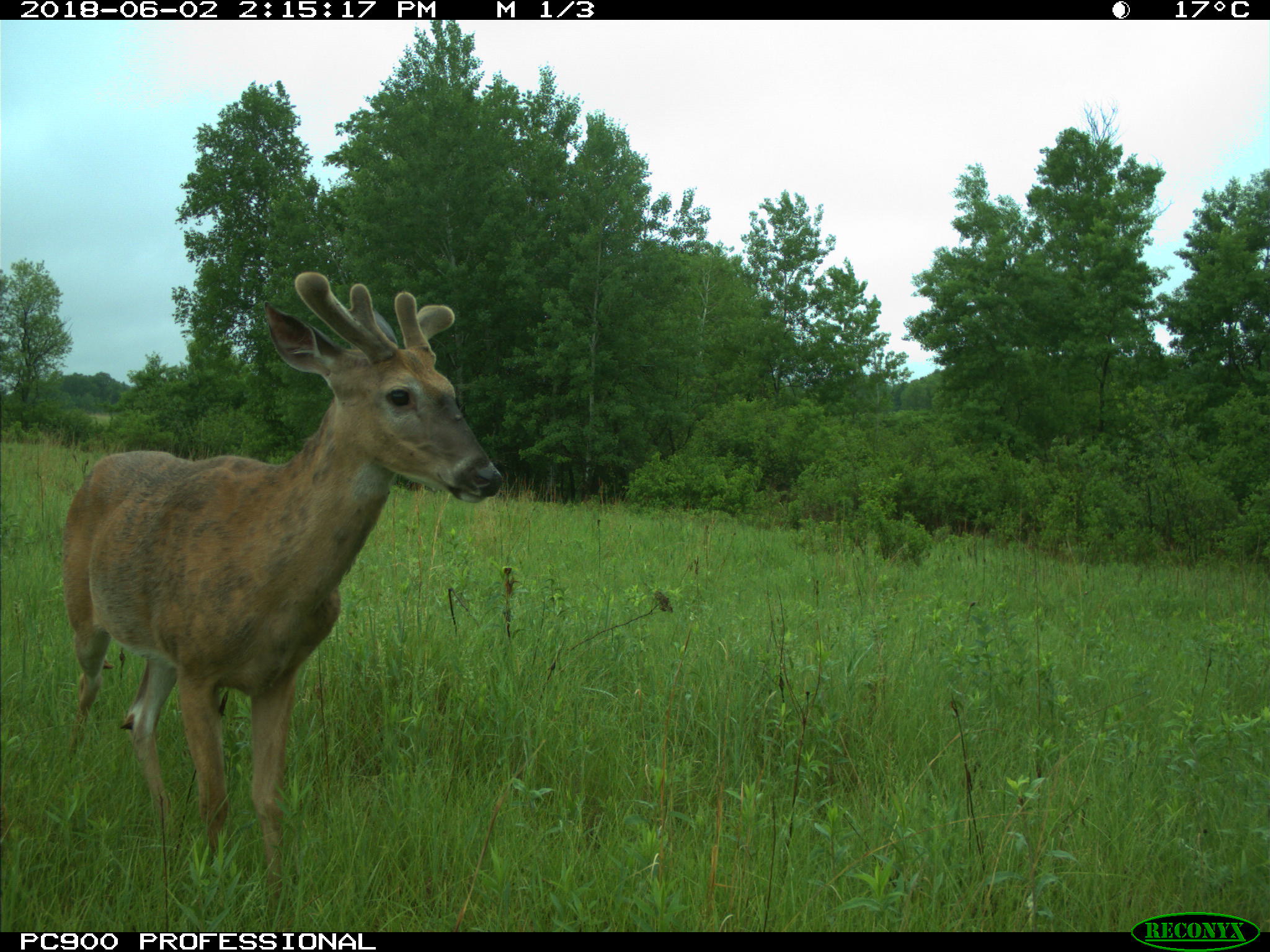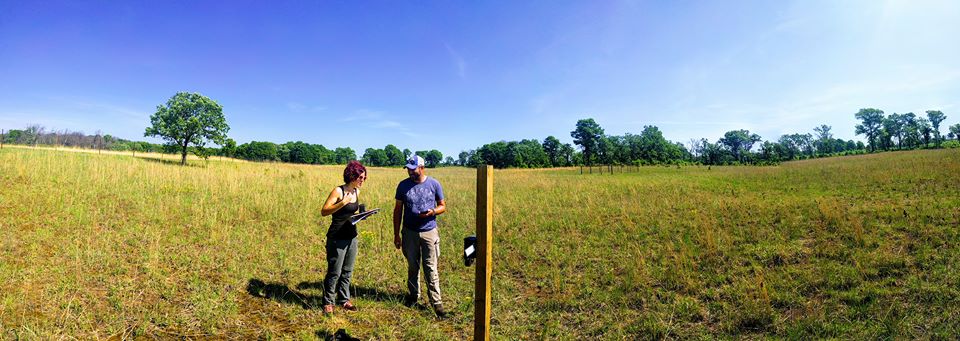Research
What is Cedar Creek?
Cedar Creek Ecosystem Science Reserve is a world-famous biological field station located in the midwestern USA. This reserve is within the meeting point of the three largest biomes of North America - tallgrass prairie, eastern deciduous forest and boreal coniferous forest - and is consequentially filled with a diverse array of floristic and faunal diversity. World-renowned scientists have made Cedar Creek their workplace from the beginning: the modern science of ecosystem ecology was conceived here in the 1940s. From the earliest work at Cedar Creek to the most modern experiments today, research has focused on ecology and the services ecosystems provide to the planet and to human society.

Animal Diversity and Behavior
Now, researchers at Cedar Creek are turning their attention to the wildlife. For decades, scientists have rigorously monitored, manipulated, and experimented with the incredible plant diversity within Cedar Creek's grassland and forest ecosystems: carbon has been measured, nitrogen fluxes quantified, seedlings meticulously counted. From this incredible body of work, we have discovered some amazing things about the functioning of the natural world. But - what about the animals?
In addition to being home to dozens of long-term plant and soil biodiversity projects, Cedar Creek is also teeming with animal life. This diverse community of herbivores, predators, and meso-predators interact in complex ways that affect each other and the environment that they live in. Rodents are stealing seeds, deer are chowing down on grasses, and recently, wolves and bison are returning to this ecosystem after decades or centuries of absence. The contributions of these interactions to the structure and functioning of these ecosystems remain under-explored. To better understanding how these animals might affect these ecosystems, researchers have deployed a vast network of trail cameras across the Cedar Creek property. These cameras are triggered by motion and body heat to take pictures whenever wildlife pass in front of them, providing a peek into the “secret lives” of the animal community. Over a hundred cameras have been set up, capturing high resolution data on the movement and activity patterns of over a dozen species, including wolves, foxes, coyotes, deer, turkeys, and more. These data will be combined with Cedar Creek's already comprehensive collection of plant and soil data to study how predators structure ecological communities and ecosystems. You can stay in touch with research news, subprojects, stories and more on our blog!

Special Projects
Wolf Recolonization
The loss of top predators from ecosystems worldwide is one of the most pervasive impacts of humans on nature. Predators can affect the demography and behavior of the prey animals they eat in ways that can cascade down to affect a variety of ecosystem processes, including the productivity and diversity of plant communities and nutrient transfer and availability in soils. In systems where people have removed or extirpated predators, ecological systems can change dramatically. However, we don't know whether restoring predators will restore the rest of ecosystems back into their previous state. There is the potential that loss of predators might have resulted in a critical transition to an alternative type of environment that persists even if predator populations later recover. Whether or not systems change after predator restoration likely depends on the type and strength of interactions between animals and plants in the community, and how much animal behavior and populations are regulated by resources vs. predation. We are studying the unassisted return of wolves to Cedar Creek in order to gain a novel understanding of the mechanisms underlying population, community, and ecosystem dynamics, and to develop frameworks predicting how top predator effects cascade through terrestrial food webs.
Trophic Cascades
When predators reduce the number of herbivores in a community by eating some of their population, they indirectly benefit the plant communities that these herbivores would have eaten - that is to say, more predators is better for plants, because it means fewer herbivores eating grasses, trees, and forbs. This is known as a "trophic cascade", where the abundance of animals at one trophic level (e.g. predators) trickles down to affect multiple other trophic levels (e.g. prey, producers).
But predators can change far more than just prey numbers - the risk of being eaten can also "scare" prey into changing their behavior in ways that could also have ecosystem-wide effects. When predators are around, prey can alter when and where they are active in order to avoid running into dangerous situations. This concentrates prey grazing, browsing, and trampling into certain areas of the landscape and frees up other spaces from herbivore activity. Hypothetically, if these "fear effects" were strong enough, this too should alter plant communities - except that the effect only manifests in certain portions of the landscape but not others.
However, we still know very little about the relative strengths of consumptive vs. behavioral effects of predators on prey behavior or even whether behavioral effects are strong enough to cause any changes to plant or soil communities to begin with. We are currently testing the different components of the "behaviorally-mediated" trophic cascade hypothesis in the no-wolf areas of Cedar Creek, simulating predator presence using wolf urine to create a fear effect, but removing the consumptive effect of predation. We are using the camera traps to see whether these cues change prey behavior, while simultaneously sampling the plant and soil communities to look for evidence of cascading impacts!

Bison Behavior
A handful of our trail cameras look at fenced-off portions of the oak savanna frequented by our summer bison herd. In March 2021, we added a new workflow called Bison Behavior where we ask volunteers to tell us about bison grazing behavior at these locations. Telling us which aspects of grazing you seeing - bison with their heads down, bison chewing, bison with plants hanging out of their mouths - and how many animals are doing these behaviors is essential to simplifying and streamlining the amount of data we collect in-person in the field. If we can accurately use trail cameras to understand the impact of consumption on the landscape, we can free up valuable scientist worktime to add other cool subprojects! You can learn more about the ins and outs ofwhy we need your help classifying bison grazing behavior in this video message from Dr. Chad Zirbel:
Additional detailed information about the bison research taking place at Cedar Creek is available at the following links:
https://www.cedarcreek.umn.edu/conservation/bison
https://eyesonthewild.blogspot.com/2019/02/be-in-bison-know.html
https://eyesonthewild.blogspot.com/2020/03/new-views.html